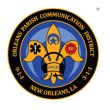First responders need access to life-saving, 3D location technology
The CSRIC III trials formed a foundational element of the FCC’s January 2015 911 Location Accuracy proceeding (the so-called 4th Report & Order in docket 07-114). Effective as of April, 2015, this new set of requirements eliminates the “indoor exemption” for wireless 911, requiring new technologies to be deployed to meet a phased set of requirements, including “floor level” Z-axis information. We’re hopeful that these efforts will enhance positioning accuracy for both the 911 and public-safety communities.
The exciting part is that the MBS and GPS signals are both processed by the same GPS chip, so the two systems are complementary and together provide a nationwide footprint of reliable, pervasive geolocation (with 3D capabilities in urban markets, where it is needed most). It also determines altitude using extremely low-cost microelectomechanical (MEMS) pressure sensors that you find in everyday smartphones.
Using the same principles that aviators use to compute the altitude of an aircraft, the MBS network is able to provide location precisely on the floor of a building. So, to enable the technology in a P25 radio or an LTE-based smartphone, you don’t need expensive new chips but simply a modified GPS chip and a low-cost barometric sensor—both of which are already available in most new smartphones.
The technology supports all the public-safety use cases of navigation, floor level detection and Blue Force Tracking. The first MBS systems were deployed in San Francisco in 2011 with smaller pilot networks in 45 additional cities.
In addition, to enable better use of the novel altitude information, one of the early MBS network providers is also constructing detailed 3D maps of urban areas around the U.S. to be able to see and locate users in a building
You can view a quick YouTube video demonstrating this ability to find an emergency caller inside multi-story buildings and observe command and control, with responding firefighters and police officers within the structure as well. It’s easy to see how valuable this could be not only for incident commanders but also for the personal safety of the first responders themselves. https://www.youtube.com/watch?v=42QWLQ7gLPg&feature=youtu.be.
As long-time public-safety professionals, it is heartening and exciting to witness FirstNet finally becoming a reality, while seeing firsthand the level of new innovation coming available to aid us in our mission. To ensure that immediate, meaningful safety benefits flow to first responders as the public-safety network is being deployed, FirstNet should make sure that mission-critical location accuracy—both indoors and outdoors—moves from an objective to a reality.
Charles Werner is the fire chief emeritus in Charlottesville, Va., and Eddie Reyes is the deputy chief of Amtrak Police-Mid Atlantic Division. Both have extensive background in public safety technology and communications and have served on numerous local, state and national public safety organizations to improve communications, interoperability and technology.










